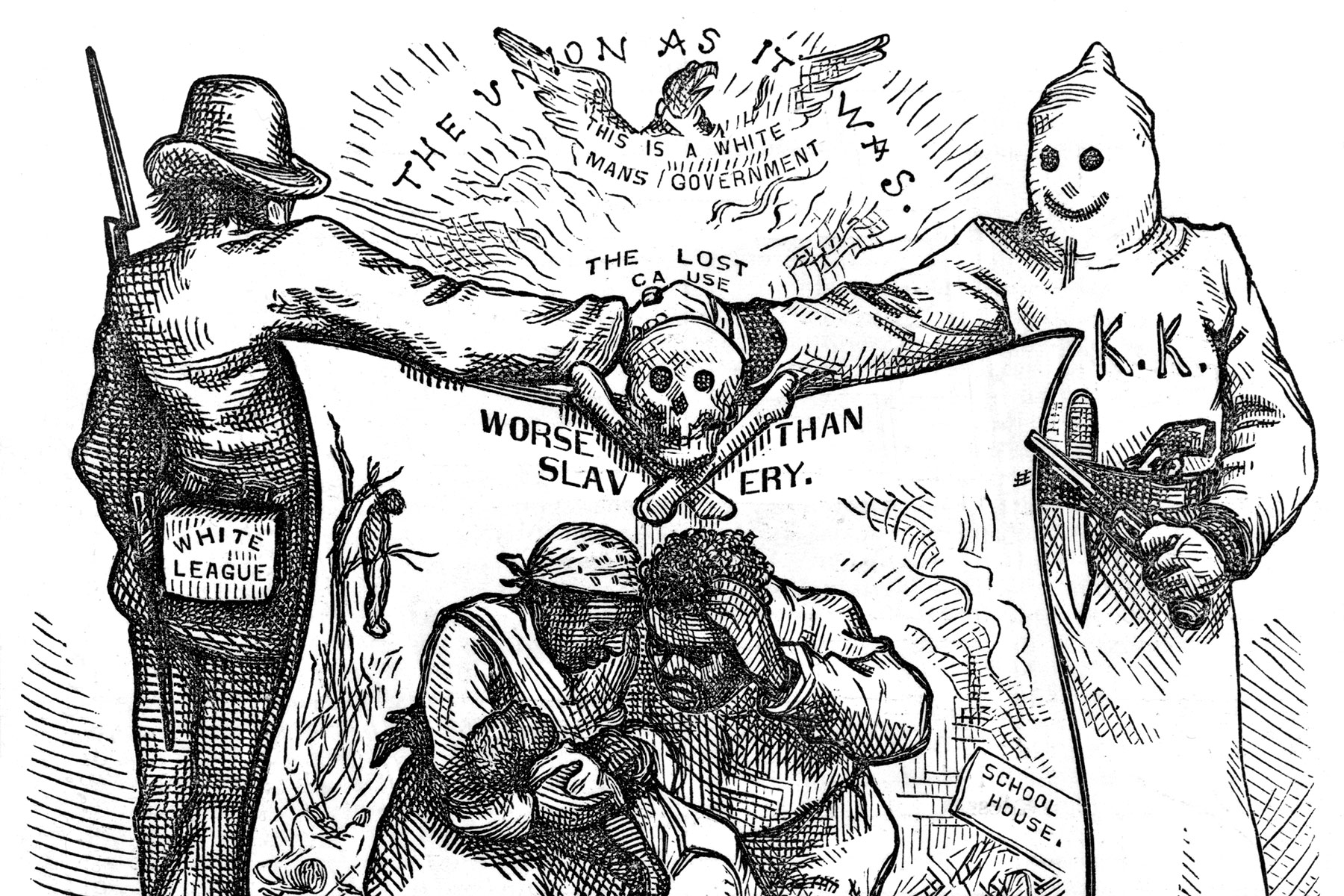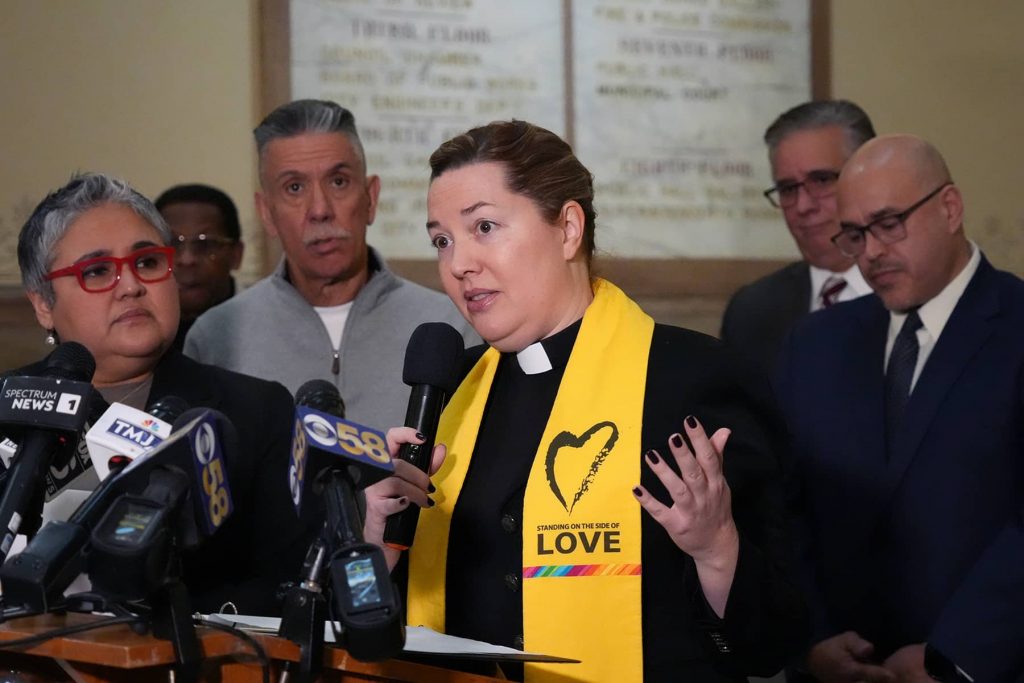
“Herrenvolk democracy” basically means social democracy for the favored race as a way not of expanding liberty to all citizens but only to the accepted in-group, people like us as the white majority.” – Rick Perlstein
Herrenvolk democracy is a crucial concept for understanding the potential racial dimension of democratic belonging and exclusion within a political body, as well as the inequalities of power, rights, and resources that follow.
Coined by Pierre van den Berghe, a Herrenvolk democracy is a political order that is “democratic for the master race but tyrannical for subordinate groups” (p.18). There is equality, but only within the dominant racial group. Most importantly, the sociopolitical equality enjoyed within the dominant racial group is premised upon rather than in contradiction with the inequality that sustains the order as a whole. The idea that this should be considered a “real” form of democracy at all may sound strange or appear hypocritical on its face, especially to contemporary citizens of liberal democracies.
The fierce international criticisms and boycotts of the apartheid regime in South Africa (where whites ruled, and people of color were disenfranchised, segregated, and stripped of citizenship) during the second half of the 20th century exemplifies this sense of its illegitimacy. Yet, the apparent contradiction of Herrenvolk democracy is something that was fought for and achieved, rather than being trans-historically obvious to all.
Consider the formally racialized character of democracy in the United States from its inception to at least the 1960s. Those who could successfully claim to possess “whiteness” (as judged by those others who already possessed it) were able to access a slate of benefits (unevenly, along gender and class lines especially) including voting rights, higher wages and two-tiered wage scales, minimal expectations of courtesy and status in the public sphere, more lenient court sentencing, exclusive access to some jobs, privileged access to public services, informal “first hired last fired” employment insurance, privileged potential access to housing, loans, and capital, a sense of superiority over all non-whites, and (most importantly before the Civil War) the right to avoid enslavement.
Those who were judged to be not-white were denied or given restricted access to these economic, political, cultural, and psychological “wages” that came with whiteness (Du Bois; also Roediger). While certainly also being inflected by gendered and class divisions, the “color line” between the “white world” and the “dark world” that WEB Du Bois describes was the foundational principle of inclusion in or exclusion from the power, resources, and privileges of the democratic order, however else they may be inequitably distributed. As Joel Olson argues, whiteness was the essential characteristic defining full American citizenship as such.
In order to lay claim to what Judith Shklar refers to as American citizenship’s provision of “standing”, the necessity of being able to prove one’s possession of whiteness was ever-present and operative through widely inculcated discrimination norms and practices among whites, threat of state persecution through law, lynching, mob violence, and a generalized extralegal enforcement of racialized terror. It is important to remember that whiteness and race are not eternal or universal concepts. As Theodore Allen observes,
“When the first Africans arrived in Virginia in 1619, there were no ‘white’ people there; nor, according to the colonial records, would there be for another sixty years.”
Race has not always been with us, but is instead a quite modern creation. Whiteness has not always existed, nor is it synonymous with being ethnically “English” or “French,” it had to be literally invented and cultivated as a distinctly political way of seeing and sorting people within the social world. By the time of the creation of the United States, those who had standing could enjoy the political advantages entailed by whiteness.
Those who were denied standing could not, and the archetypal anti-citizen without standing of the U.S. Herrenvolk system was Black. While resistance to the racial order was also common, this sometimes led to new groups of immigrants or denizens of acquired territory who were not securely considered white (but also not Black) attempting to prove their effective whiteness, in part by helping to maintain the subordination of Blacks.
Irish immigrants (who were not considered white at first) regularly tried to accomplish this by integrating themselves into police forces and the Democratic party machinery, and actively supporting segregated job sites and unions, two-tier wage systems, and Black voter intimidation. Some Texan Mexicans incorporated into the U.S. after the Mexican-American War attempted to accomplish this by protesting their exclusion from lynch mobs (Foley, p.210). Some Chinese immigrants to the Jim Crow Mississippi Delta made an intentional effort to become white through cultural assimilation, giving their children “white” names, and joining white churches.
The principle of whiteness as standing and citizenship in the United States’ Herrenvolk democracy implied an essential sociopolitical (though not economic) equality between all whites, and simultaneously the superiority of even the lowest white person over every other non-white person. Olson (drawing from observations by Du Bois) refers to whiteness as a kind of “cross-class alliance” for good reason. The origins of whiteness reside in the unique economic and demographic circumstances of the European colonies in the Western hemisphere, particularly the need for maximally exploitable and disposable labor in the sugar, tobacco, and eventually cotton plantations, and the need for enforcers of this social system of labor and control.
While the early complexity of this “invention” of the white race as a modern category of political power will be skipped over here (see Theodore Allen), what matters by the founding of the United States is that the enforcement of the racial order was taken up by white society as a whole and working class whites in particular. Du Bois is very clear here about the options that the white working class faced. They could have opted to ally with their fellow non-white workers against the economic elites who were exploiting them both.
The power of whiteness was not inevitable. Instead, they (by and large, of course not absolutely and universally) accepted the bribe from white elites, receiving political standing and the wages of whiteness – in particular the “glass floor” of always being able to look down on any black person as an inferior – in exchange for maintaining the racial order, slave labor, and relatively stable capitalist accumulation. In doing so, a wedge was driven between different segments of the American working class.
Whiteness and its privileges were a bribe, but also a series of concessions to white workers in order to buy social peace and quell mass working class revolts against the prevailing economic system. Working class revolt still occurred, and frequently, but would conceivably have been even more powerful and effective had the working class not been cleaved by the color line. After slavery’s end and the failure of Reconstruction, whites continued to fight for racial solidarity instead of a universal class solidarity in order to maintain the expected privileges that they had come to enjoy.
As a result of long struggles against this racial order by people of color, their white allies, and some favorable circumstances (diplomatic challenges of the Cold War and industrializing shifts in the Southern U.S. economy in particular), the United States is no longer a Herrenvolk democracy, but is instead something else; a part-“colorblind” and part-“multicultural” democracy, wherein race and race talk is either denied and hushed or framed as as one equal, given group identity to be tolerated/celebrated among many others.
As Olson argues, both conceptions preclude a political understanding of the production and reproduction of race as a power relationship, much as individuated conceptions of market relations can preclude an understanding of the production of class inequalities and power, and assumptions about the “naturalness” of sex differences and roles can preclude an understanding of the production and reproduction of inequalities between sexes, and the construction of gender categories and roles at all.
The colorblind/multicultural United States government is formally opposed to explicit racial discrimination, as is most of the populace. Similarly, whiteness is no longer an official artifact that bestows standing and thus citizenship. Yet, there continue to be systematically reproduced inequalities, discrimination, abuses, and exclusions along racial lines in wealth, income, employment, education, health, political representation, housing, policing, criminal sentencing and imprisonment terms, and environmental quality, among other things.
By reducing racism to individual inter-group prejudice and failing to capture the character of race as an unequal power relationship instead of an ostensibly pre-political identity or attribute, both colorblindness and multiculturalism fail to comprehensively challenge racism and the powers and privileges still lingering with whiteness and its privileges.
Understanding the concept of Herrenvolk democracy allows us to see the anatomy of many mostly-bygone officially racialized political systems, especially in the case of the United States. In doing so, however, it also allows us to better see how the historical subsidies of racialized vectors of violence continue to stamp the character of the present. The continuity of these past inequalities and subordinations into the present highlights the failure of colorblind/multicultural democracy as a means of confronting the continued existence of institutionalized racism and whiteness as a political force.
Pretending race isn’t there or that it is simply one politically benign attribute among others is insufficient to the task of confronting its continued power as a means of unequally distributing political power, social inclusion, material resources, economic opportunities, suffering at the hands of the punitive carceral state, and the possibilities of full political participation and individual flourishing.
References
- Allen, Theodore W. The Invention of the White Race Vol.1. Verso, 1994.
- –. The Invention of the White Race Vol.2. London: Verso, 1997.
- Du Bois, WEB. Black Reconstruction. New York: Free Press, 1998 [1935].
- –. Dusk of Dawn. Oxford, 2014 [1940].
- –. Souls of Black Folk. Dover, 1994 [1903].
- Foley, Neil. The White Scourge: Mexicans, Blacks, and Poor Whites in Texas Cotton Culture. Berkeley: University of California Press, 1997.
- Ignatiev, Noel. How the Irish Became White. New York: Routledge, 1995.
- Loewen, James W. The Mississippi Chinese: Between Black and White. Cambridge, MA: Harvard University Press, 1971.
- Olson, Joel. The Abolition of White Democracy. Minneapolis: University of Minnesota Press, 2004.
- Roediger, David R. The Wages of Whiteness: Race and the Making of the American Working Class. London: Verso, 1991.
- Shklar, Judith. American Citizenship: The Quest for Inclusion. Cambridge, MA: Harvard, 1991.
- Van Den Berghe, Pierre L. Race and Racism; a Comparative Perspective. New York: Wiley, 1967.
Justin C. Mueller
“The Union as it was The lost cause, worse than slavery” was published by Harper’s Weekly (V.18, No.930, 1874 October 24, p. 878) with the historical summary: Man ‘White League’ shaking hands with Ku KIux KIаn member over shield illustrated with African American couple with dеаd baby. In background, man hanging from tree.
Library of Congress
Originally on justincmueller.com as Concepts of Note: What is Herrenvolk democracy?













